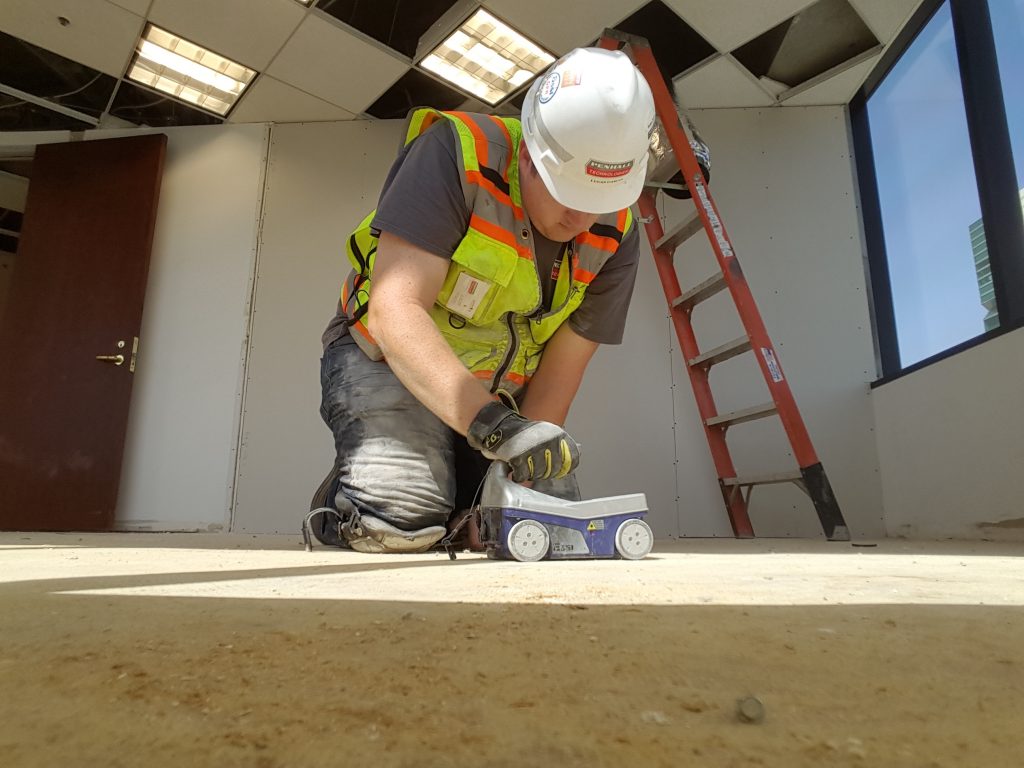Concrete Scanning: A Critical Action Towards Guaranteeing Architectural Integrity and Security
In the realm of construction and facilities upkeep, the value of concrete scanning can not be overstated. By utilizing sophisticated modern technology and methods, concrete scanning serves as a pivotal device in making certain that the stability and security of buildings and bridges are maintained to the highest standards.
Value of Concrete Scanning
Concrete scanning plays a vital function in making certain the architectural honesty and safety and security of buildings and infrastructure tasks. By making use of innovative modern technologies such as ground-penetrating radar (GPR) and electromagnetic induction, specialists can non-destructively inspect concrete structures to identify potential defects, voids, embedded objects, and support layout. This procedure enables very early discovery of abnormalities that can jeopardize the stability of a framework, avoiding costly damages and making certain the safety of owners.
Before drilling, cutting, or coring into concrete, scanning aids recognize the exact locations of rebar, post-tension cable televisions, and other ingrained elements, minimizing the risk of unintentional hits that could lead to architectural weak points. Additionally, concrete scanning aids in high quality control by confirming the thickness of concrete covers and finding any kind of disparities that may impact the total resilience of the framework.
Technology for Concrete Inspection

Advantages of Very Early Discovery
Timely discovery of structural problems can significantly alleviate threats and ensure the durability of building tasks. By identifying prospective issues beforehand in the construction process, stakeholders can take proactive actions to resolve concerns prior to they intensify right into bigger and extra pricey troubles. Among the essential benefits of early detection is the avoidance of architectural failings, which can position significant security threats and lead to project delays and economic losses.
Furthermore, very early detection enables prompt repair services and maintenance, which can help expand the life-span of the framework. By resolving concerns without delay, building and construction groups can prevent expensive repair services or even the need for premature substitute of architectural parts. This positive method not only conserves time and money yet additionally improves the overall safety and security and durability of the construction project.
Additionally, very early discovery can boost job planning and decision-making by giving stakeholders with useful understandings right into the condition of the structure. Equipped with this information, task supervisors can make enlightened options relating to building materials, timelines, and approaches, causing a lot more efficient and effective task end Web Site results.
Guaranteeing Architectural Stability
Making sure the structural security of a building and construction task is extremely important to its safety and security and long life. Concrete scanning plays a crucial duty in guaranteeing structural stability by spotting prospective problems such as spaces, delamination, or support rust that could jeopardize the stability of the framework over time.
By using sophisticated scanning innovations like ground-penetrating radar (GPR) and electromagnetic induction, building and construction professionals can non-invasively examine concrete structures to recognize areas of concern beneath the surface area. This aggressive strategy permits for the very early detection of weak points or problems, enabling prompt fixings or reinforcement to protect against architectural failures.
Regular concrete scanning during different construction phases and throughout the life process of a structure can help preserve its stability, minimize threats, and make certain the safety and security of passengers. By prioritizing structural stability via concrete scanning, building and construction jobs can enhance their resilience and durability, ultimately adding to higher safety and security and long life.

Protecting Against Essential Failures
To safeguard against catastrophic occasions, precise surveillance and positive upkeep are i was reading this essential in avoiding vital failings within structural structures. Detecting possible problems prior to they escalate is vital to stop architectural failures. Implementing regular inspections, such as concrete scanning, can reveal hidden flaws like gaps, fractures, or deterioration that might compromise the honesty of a structure. By using innovative scanning technologies like Ground Penetrating Radar (GPR) or Concrete X-ray, engineers can non-destructively examine the problem of concrete and determine weak factors that need support or repair work - RainierGPR Service Areas.

Verdict
In conclusion, concrete scanning plays an important duty in ensuring structural integrity and safety and security by utilizing advanced modern technology for very early discovery of possible problems. This aggressive strategy aids protect against visit critical failures and makes sure the stability of frameworks. It is necessary to focus on concrete evaluation as a conventional method to shield the long life and safety and security of structures and framework.
Concrete scanning plays an essential function in making sure the structural stability and safety and security of structures and framework projects. Furthermore, concrete scanning aids in quality control by validating the density of concrete covers and detecting any discrepancies that may impact the general longevity of the framework. Concrete scanning plays a critical function in ensuring architectural security by finding possible issues such as voids, delamination, or support rust that could jeopardize the honesty of the framework over time.

In verdict, concrete scanning plays an important duty in making certain structural honesty and safety by utilizing advanced innovation for early detection of prospective problems.